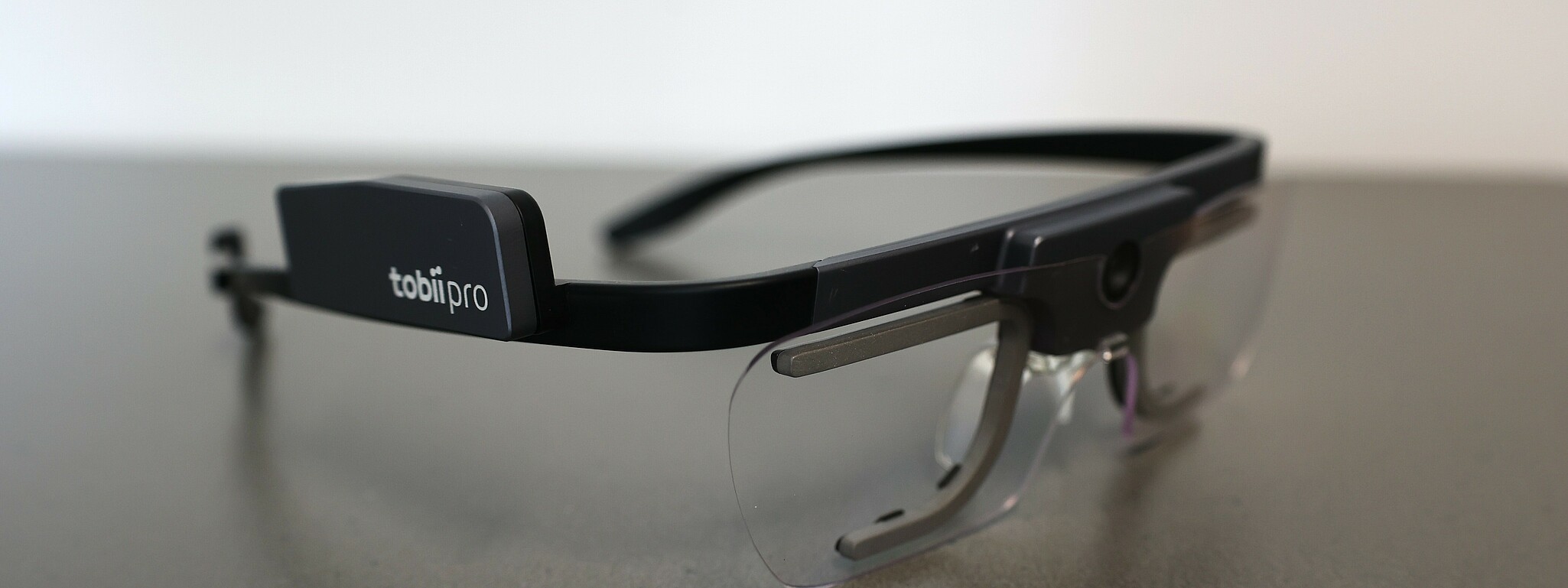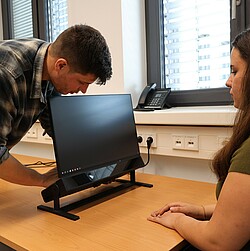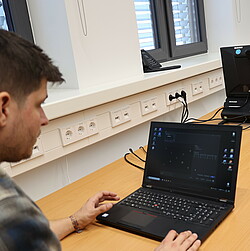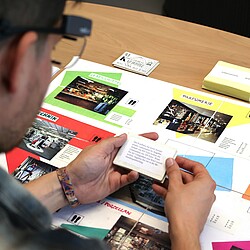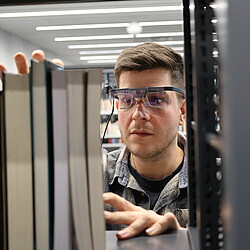Eye tracking, as a non-invasive, video-based measurement technology, makes it possible to record a person's eye movements and gaze directions in real time and analyze them using objective and quantifiable data. Infrared cameras and special sensors can be used to precisely determine where a test subject is looking and for how long. The technology has many applications, for example in market research to analyze consumer behaviour and optimize advertising measures. In psychology and neuroscience, it is often used to study perception and cognitive processes and in usability research to improve user interfaces, to name just a few examples.
The eye-tracking equipment in the research laboratory includes The stationary Eye-Tracker Spektrum, the Eye-Tracking Glasses 2 and Eye-Tracker X2-60 Compact from Tobii.
